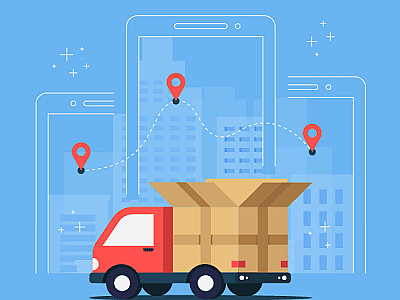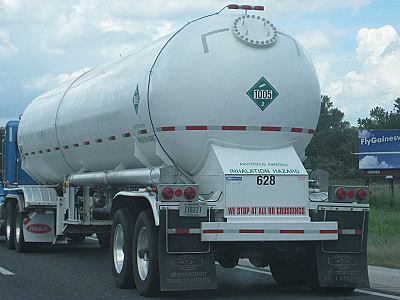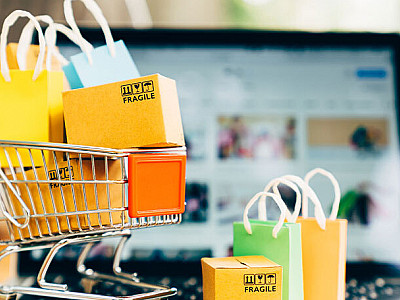Understanding the Opportunities of Insurance in Indonesia
An overview of the current trends within Indonesia's insurance industry.



The growth of e-commerce in Indonesia has been going strong for the last five years, and yet one of the many challenges platforms are facing is delivery. Most Indonesian consumers are demanding faster delivery time, precision, and better customer service. Last mile delivery is a new solution in Indonesia that many are starting to be more curious about.
As the very last step of the delivery process when a package is moved from a transportation hub to consumers across Indonesia, optimizing last mile delivery to maintain efficiency while reducing cost as much as possible is not as easy as it seems.
One of our Advisors was able to share insights into this logistic process based on their experience within the role of HSE & Fleet Management as part of our expert network Indonesia.
Essentially, vendors are third party companies that help logistic companies to increase their payload. This can be through several services, such as the offer to rent the vendor’s drivers, vehicles, or even both. Meanwhile, a fleet department consists solely of the logistic company’s own units. So, they handle their own drivers, vehicles, and the management of these resources, which are often also called assets. Why? Because when a company owns their own fleet department and has fully utilized them, they will have the option to auction their units for added value.
If a logistic company is still quite new, they may not see it necessary to increase their fleet, and so this is where vendors come in. Usually, there are 3 methods in working with vendors. The first one is to rent delivery units consisting of both the driver and vehicle per shipments, or also known as “on-call”. The price is based on a negotiation and comparison between the logistic company’s cost prediction, and the vendor’s offer. The second method is to monthly rent only the vehicle, and the logistic company will handle sourcing the drivers themselves. Lastly is to rent the vehicle and driver based on the needs of certain routes.
Even for a big logistic company, increasing the size of their fleet remains to be a challenge. For instance, when it comes to sourcing their own drivers, they must implement a strict and thorough screening process which of course, will take quite some time to do. Once the drivers are accepted as part of the fleet, the company still has to recruit a capable specialist to manage these human resources. The same goes for vehicles. The company would have to implement a cohesive maintenance management system to reduce any risks or mistakes happening in the field during shipment.
With all these things in mind, vendors are seen to be more practical. They offer various packages and services for their units, while still allowing logistic companies to negotiate the prices.
Usually blank vans, CDD (Colt Diesel Double) truck, CDE (Colt Diesel Engkel) truck, Mitsubishi FUSO, and trailer truck. Although there is quite a variety, last mile logistics often relies on vendors considering the multi-drop aspects of most shipments. Companies aren’t exactly able to profit much from this, but the efficiency and practicality of not having to handle the management of human resources and vehicles are something that logistic companies can resist.
Of course. It is essential for logistic companies to monitor fuel consumption to uncover any possibilities of fraud done by the drivers during their shift. The most common cases are drivers selling truck fuel, and using the vehicles for their personal benefits. Additionally, companies can also predict how much fuel will be needed for each route, and as part of comparative analysis for future planning.
The system also allows companies to perform route optimization. With the help of GPS feature, we can analyze which routes are more efficient from several aspects: fuel consumption, operational cost (toll fees and driver working hours), as well as safety and security.
Lastly, with the system we can manage the driver’s behaviors based on their driving pattern and location during shipment.
For the current logistic company Mr. RAP is working at, he developed a Vehicle Monitoring team that actively checks whether the driver is delivering the shipment according to the predetermined route. If the driver goes off course, the Vehicle Monitoring team will immediately contact the driver and question their whereabouts and reasoning.
On top of this, the team will also monitor the driver’s SLA. If it turns out that the delivery time is about to be late and potentially exceed the SLA, the Vehicle Monitoring team will instantly contact the driver and help with coming up the best solution possible.
By doing this, Mr. RAP hopes to maintain professionalism across all aspects within the logistic company, specifically for last mile delivery.
Contact us to explore more about the current trends of the logistic industry and be connected with our Indonesia expert network.
Subscribe to our newsletter, and stay updated with the latest insights on various industries.
About Mr. RAP
Mr. RAP has over 4 years of experience working as an operational fleet for two very distinct companies. In his current role as HSE & Fleet Management, he is responsible for providing and conducting operational evaluations, coordinating the drivers with the driver service providers, maintaining his relationship with vendors and suppliers, monitoring truck utilities, and usage, and is responsible for accident analysis, handling violations & conversation with high risk drivers. Mr. RAP also contributes to attainment of the K3 certification provided by the Indonesian Ministry of Labor.
We will give you updates of our latest news
An overview of the current trends within Indonesia's insurance industry.

One of Askpert's advisors had the opportunity to share his insights about the expedition industry.

Ammonia is one of the new green energy technologies to curb emissions. Mr. DF, a specialist in the ammonia manufacturing sector, provided us with insights into the expansion of the ammonia industry in Indonesia.

Our advisor shares insights on how ecommerce enablers have been helping brands in Indonesia.
